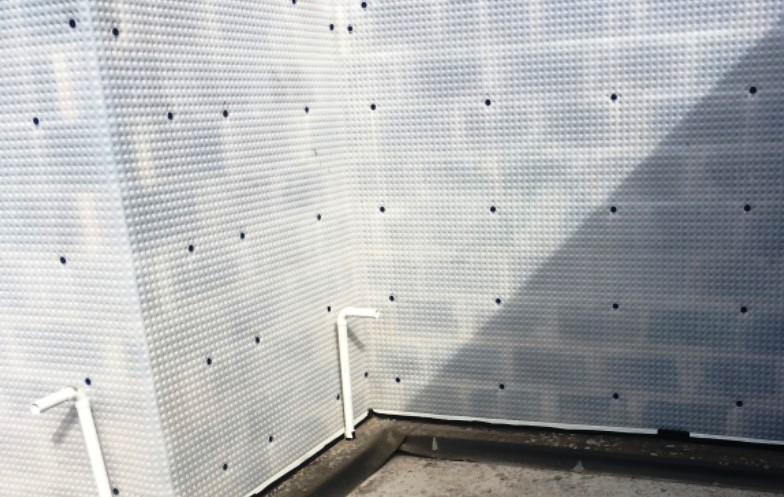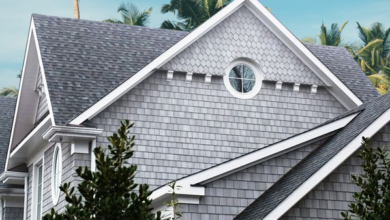Install EIFS on Metal Studs

The Exterior Insulation Finishing System, or EIFS for short, is a superior energy-efficient cladding type. It has a decorative finish after installation and is fairly durable.
EIFS is likewise adaptable. That is, it can be used with a variety of building materials, such as pre-cast panels and brick. Can EIFS be applied to metal studs, though? You will learn more about that in the review that follows.
Is It Possible to Use EIFS on Metal Studs?
It is possible to apply EIFS to metal studs. Metal stud framing has become increasingly popular among contractors and homeowners lately due to its affordability, durability, and light weight.
The good news is that metal stud framing and EIFS work together. However, one important factor that affects how long both materials last is proper installation.
It’s important to properly address certain factors, like moisture management, when applying EIFS on metal studs.
But if installed properly, EIFS on metal studs can offer a long-lasting, energy-efficient system that’s also highly appealing from the outside of the building.
How Can EIFS Be Applied To Metal Studs?
- Step 1: Get the metal studs ready
An external insulation finishing system simply cannot be fastened to metal studs. In order to guarantee a solid bond between these two materials, preparation is essential. So, start by giving the metal studs a thorough cleaning.
Make sure there is no dust or debris on them. Use a primer to increase the metal studs’ adherence, and seal them to stop corrosion.
- Step 2: Attach a rigid insulating board.
Attaching a rigid insulation board that has been approved by EIFS is the next method. I usually tell my readers to use a combination of mechanical fasteners and adhesive to secure the rigid board to the metal studs. This guarantees a solid bond.
To prevent moisture from penetrating the board, please attach it with the seams running vertically.
- Step 3: Use A Barrier That Is Resistant To Water
If you have EIFS on metal studs, moisture is your worst enemy. A water-resistant barrier is therefore essential!
Place a water-resistant covering over the board that is rigidly insulated. Ensure that all of the board’s seams are covered.
- Step 4: Spread the base coat.
When applying EIFS on metal studs, a base coat performs two functions: first, it establishes a base for the finish coat, and second, it provides a substrate for the reinforcing mesh that will be installed in the subsequent step. There is no need for the base coat to be very thick.
- Step 5: Attach the reinforcing mesh.
When installing mesh on an EIFS system, never cut corners. This mesh serves as the structural backbone of the entire EIFS system. The likelihood of failure is very high in the absence of it. Attach the reinforcing mesh before the base coat dries.
- Step 6: Apply the last coat of paint
Now is the perfect time to embellish your EIFS. You will have successfully applied EIFS on metal studs when you finish the project and apply the final layer.
For metal studs, is EIFS the best insulation?
Professionally speaking, I can state with confidence that EIFS is among the best metal stud insulations.
Nonetheless, there are numerous insulation options, such as fiberglass and spray foam, that are superior to EIFS in a number of ways. Therefore, we can’t say that EIFS is the greatest. However, it’s among the best options!
However, there are a number of reasons why EIFS is the best insulation for metal studs, including:
- You can be sure of excellent indoor comfort and energy efficiency when you install EIFS on metal studs. Systems for external insulation finishing lessen heat transfer to metal, which is a fairly good conductor of heat. Homeowners who have such a setup benefit from decreased energy bills and consumption.
- EIFS on metal studs is also very adaptable. You have a plethora of options when it comes to the external aesthetics because of the extensive selection of finishes available.
- The effects of moisture damage are avoidable if you use the installation technique I’ve covered above. Unlike most types of insulation systems, EIFS can withstand moisture penetration better.
- A properly installed EIFS on metal stud framing has a very long lifespan. That implies you will receive value for your money.
- EIFS mounted on metal studs will reduce noise from nearby roads in addition to providing thermal insulation. thus you’ll appreciate having a quieter house.
What Consequences Come With Using EIFS On Metal Studs?
- Mounting EIFS to metal studs is a difficult task. This process calls for accuracy and careful planning. The largest obstacle to installing EIFS on metal studs is this.
- Although exterior insulation finishing systems are reasonably priced, the kind of finish you choose to apply can significantly affect the initial costs. The likelihood that the finish you choose will cost a few extra hundred dollars increases with its level of sophistication.
- Additional fire barriers are typically needed for EIFS on metal in order to comply with building codes and ensure your safety.
- The need for routine maintenance and inspections is another disadvantage of an EIFS installed on metal studs. In order to lessen the negative effects of water damage, this is done.
Which Typical Errors Should I Avoid When Applying EIFS To Metal Studs?
The process of applying EIFS to metal studs is simple. And everything should function flawlessly as long as you adhere to the previously provided guide. However, since we are fallible human beings, mistakes are inevitable.
Here are some common mistakes people make when applying EIFS on metal studs that you should avoid because prevention is always better than cure:
- Underestimating how crucial it is to work with a qualified EIFS installer. There’s no need to tackle this alone unless you’re very skilled at installing these kinds of systems.
It’s also important for you to realize that there are various kinds of EIFS systems, and each one requires installation by a highly qualified professional.
- Selecting an inferior EIFS system. I understand how hard things are right now. However, choosing an inexpensive EIFS will mean sacrificing quality. You don’t need my explanation of what happens when inferior EIFS is applied to metal studs.
- Not priming and cleaning the metal studs before fastening the EIFS.
- Not keeping the metal stud EIFS in good condition. If you disregard this system, issues will progressively arise, and it will be too late for you to realize how bad things have gotten.
What Is The Price Of Applying EIFS To Metal Studs?
EIFS installation on metal studs typically costs $8 to $14 per square foot. Determine the size of the metal stud framing and the approximate cost of this project using this figure.
Consequently, the greater the coverage, the higher the cost. It’s also important to note that better EIFS systems do cost more than inferior ones. Remember to account for labor expenses.
Sometimes the cost of applying EIFS on metal studs can go up due to the installation’s complexity. Higher installation costs are more likely to be associated with homes with a lot of curves and corners.
Don’t choose the first installer you come across if you want to make sure you get a good deal on this project. Get estimates from several contractors, then evaluate them.
By performing some of the aforementioned chores—like getting the metal studs ready—on your own, you can also lessen the workload.
What Is The Duration Of EIFS On Metal Studs?
A properly installed EIFS can last 20 to 25 years on metal studs. By comparison, that is a very long period for conventional insulation systems.
EIFS will last longer if you use high-quality materials and install them correctly. But the lifespan will be drastically shortened if you don’t maintain your EIFS.


can you send me picture or detail for EIFS on steel tructure please?